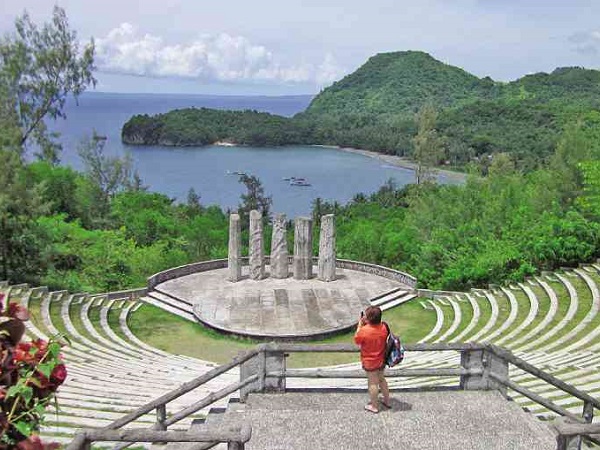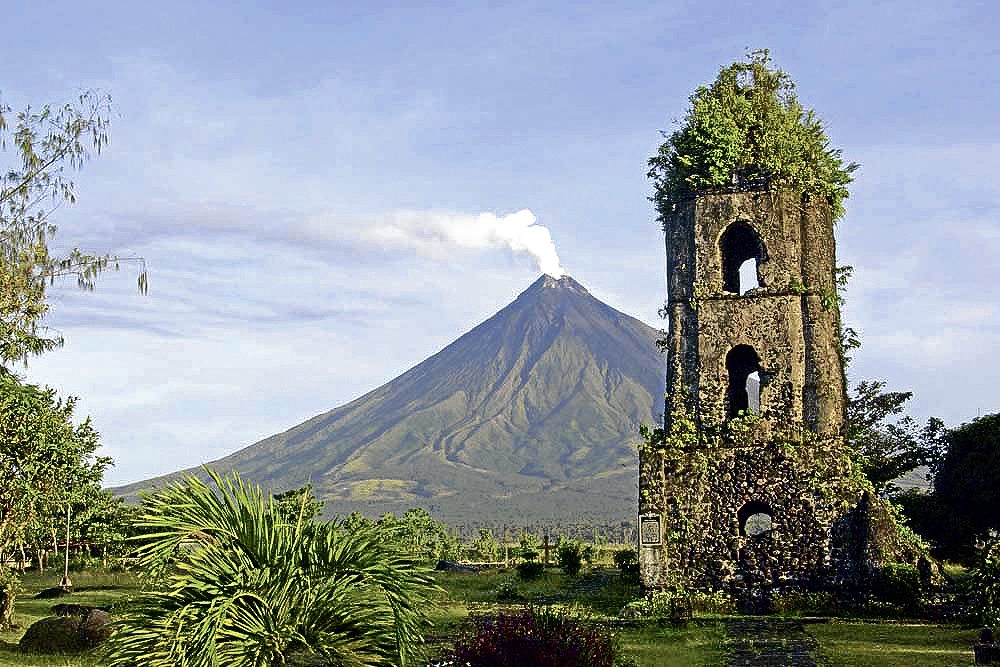Albay, Bicol
Albay is a province of the Philippines the capital of the province is Legazpi city located at Bicol region in southeastern Luzon.regional administrative center of Bicol is located in the southern foothill of Mayon Volcano.


Legazpi, Albay famous tourist spot:
Mayon Volcano
One of the Philippines famous volcanoes located. Mayon volcano is the most active volcano and considered world's most perfectly formed a cone shaped.
Mts. Isarog, Iriga and Bulusan
Mayon's "little sisters" these mountain areas are designated National Parks protecting native plants and animals.Tiwi Hot Springs National Park
A highly active thermal area, Tiwi has long been a popular place to "take the medicinal waters" and bathhouses abound. The waters are hottest in Naglagbong Lake, a boiling sulfur pool. Tiwi is also the site of the mammoth Geothermal Electric Power Plant, which harnesses steam to generate electricity, and a salt making industry.Caves and Spelunking
Hoyop-Hoyopan Caves - about 15-km from Legazpi, the name means "blow-blow" in the local dialect from the sound of the wind whistling through the main entrance. Archeological artifacts dating from 50 B.C. were excavated by a Franciscan priest and are now housed at the National Museum in Manila and nearby Camalig Church.Calabidongan Caves - 2-km from Hoyop-Hoyopan, these caves feature an underground stream and a population of bats. Pottery, human bones, beadwork and other artifacts believed to be 4,000 years old have been found and can be seen at Camalig Church.
Del Rosario Caves - located near Jovellar, a grotto-like cavern on a hillside.
Minaroso Caves - on Batan Island located close to the sea and is a haven for seabirds and swallows.
Waterfalls and Lakes
Busay Falls - one of the highest in the country, it cascades down in seven tiers from a height of 800 feet into two catchbasins. Accessible by foot trail.Mataginting Falls - in Jovellar near the Naglaus Underground River.
Palale Falls - in Malinao.
Lake Danao - located 15-km northeast of Polangui, it's nestled in a lovely setting between Mts. Malinao and Masaraga.
Beaches and Islands
Sogod Beach - in Bacaycay it's adjacent to the highway and is popular for its white sand enclaves.Buhatan Beach - in Santo Domingo are the remains of a Spanish Galleon five fathoms deep in clear water. Scuba divers can explore the wreck, though its relics are now kept at the National Museum in Manila.
Cagraray Island - off the east coast of Albay, it offers many pristine white sand beaches.
Batan Island - in the same area, it's a sanctuary for many types of wildlife including monkeys, hornbills, mallards and huge pigeons.
San Lorenzo Beach - commands a panoramic view of Tabaco Bay and the bucolic San Miguel Island.
Putsan Beach - has black volcanic sands and its local people produce beautiful pottery using ancient methods.
Kilayukay Beach - echoes the South Pacific islands.
Ilologan Beach - excellent for skindiving and fishing it has a long stretch of coral sands.
Roca Baluarte - a fort-like formation which has been converted to a beach resort.
Rizal Beach - about an hour from Legaspi in Sorsogon, pristine white sands beckon.
Cultural Attractions
Cagsawa ruins - in 1814, Mayon Volcano erupted and sent lava flows cascading down its sides. The townspeople of Cagsawa fled to the church where they perished when it was engulfed in the fiery flows. Today, only the church tower remains as a memorial.Daraga Church - an 18th century baroque church poised on a hill with commanding views of the sea and Mayon Volcano. Its stone masons suffused the facade with statuary, carvings, alcoves and niches at different levels.
Camalig Church - built entirely out of volcanic rocks it has a small museum which houses archeological artifacts extracted from local caves.
Budiao Ruins - like Cagsawa, this town is thought to have been destroyed in the 1814 Mayon eruption.
Sinimbahan Ruins - The remains of a seaside church leveled by a tidal wave.
Japanese Garden - built by Japanese Peace Corps volunteers.
The Albay
Park and Wildlife, Leagazpi City
It is a picnic grove and a park combined. It also
serves as the home to 347 animals of 75 species.
Liberty
Bell, Legazpi City
Installed in 1945 by the American
liberation forces at the Penaranda park in front of Albay Provincial Capitol.
It is made from Bronze.
Japanese
Tunnel, Legazpi City
Used aan arsenal during the
second World War it measured 40 meters long and around 7 ft deep.
Located at the lobby of the Albay Provincial Capitol and serves as the avenue for artists to show off their visual creations.

Walang komento:
Mag-post ng isang Komento